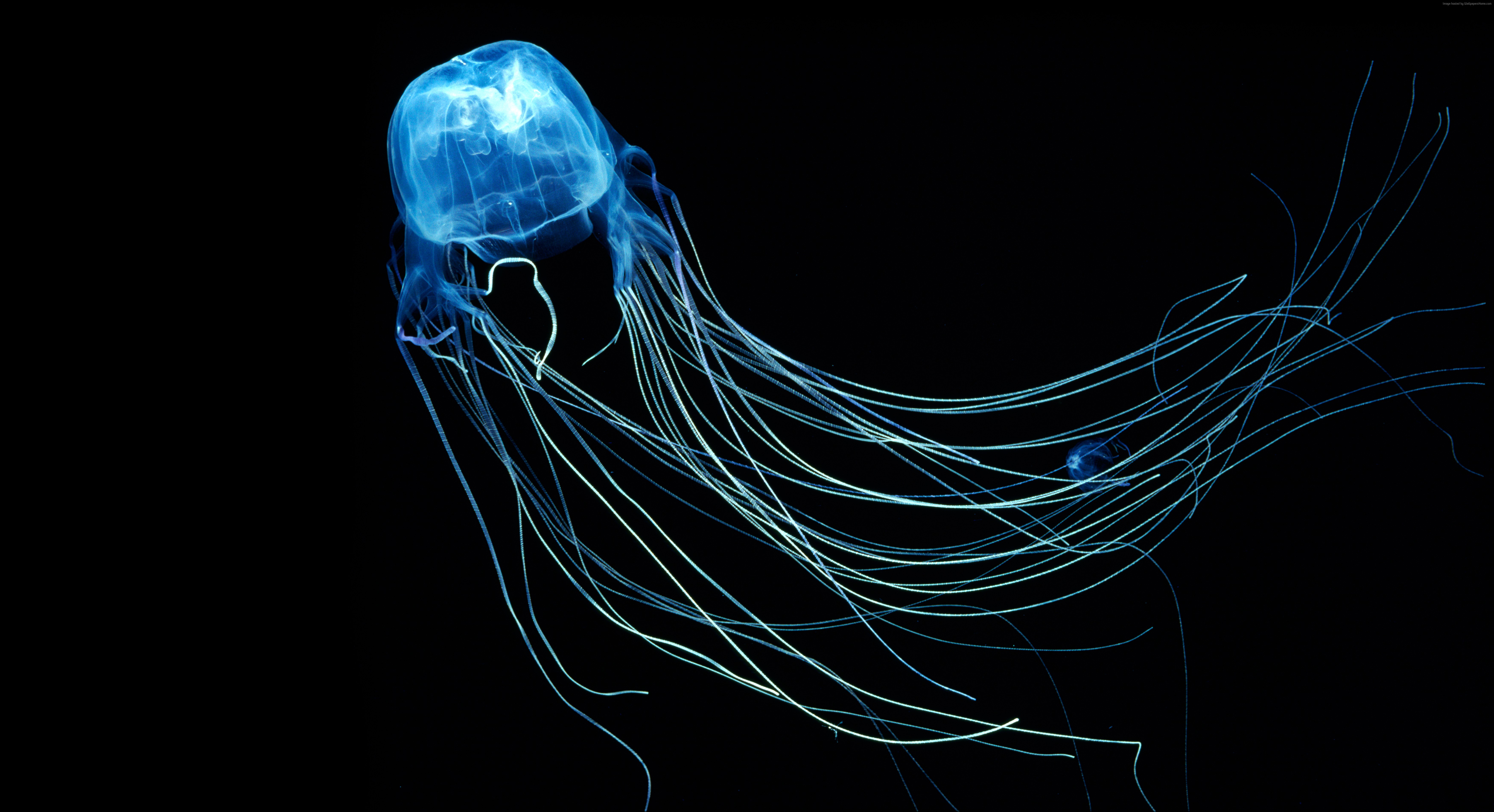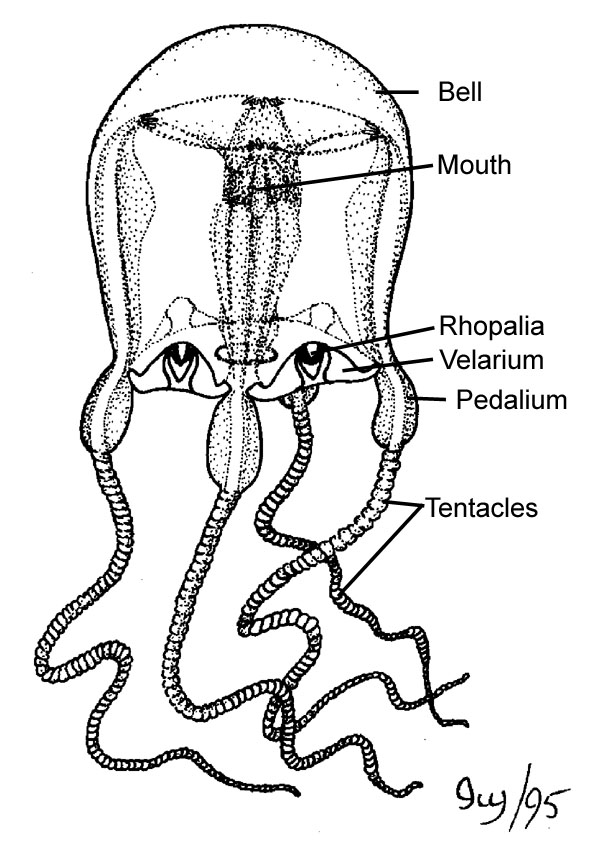
It needs to stay within the canopy to find its food if it drifts into the open lagoon, it will starve. These light patches attract small animals called copepods, which the jellyfish eats. The water is broken up by shafts of light, which pierce through holes in the canopy above. This adaptation helps the jellyfish navigate through the murky water of its mangrove home. This animal is perpetually looking straight up, even if it’s swimming upside-down. As a result, it’s always vertical and the upper lens eyes are always pointing upwards, no matter how the jellyfish’s body is angled. The whole structure is a weighted ball, dangling from a string. The upper lens eye sits at the top of the cluster, and there is a heavy crystal called a statolith on the bottom. Each rhopalia sits at the end of a flexible stalk. Now, Anders Garm from the University of Copenhagen has found that the jellyfish always keeps its upper lens eyes pointing towards the sky. They can actually see images, with the aid of light-focusing lenses. But the other two – the “upper lens eye” and “lower lens eye” – are far more advanced. Four of these are simple pits or slit that can do little more than detect the presence of light. The eyes are grouped into four clusters called rhopalia, each containing six eyes. Scientists have known about these for over a century, but people are still trying to work out what they do. It’s an active, manoeuvrable predator, and it finds its way around with no fewer than 24 eyes. The box jellyfish ( Tripedalia cystophora) is far from a simple blob with tentacles.

But their owner couldn’t be more different – it’s a box jellyfish, and it’s looking for some shade. They’re assembled using the same genetic building blocks, and they have lenses, retinas and corneas. These eyes are surprisingly similar to yours. Accessed April 28, 2022.In the mangrove swamps of Puerto Rico, four eyes are permanently fixed on the sky. Emergency Medicine Clinics of North America. Marine envenomations: Jellyfish & hydroid stings.In reply to evidence-based treatment of jellyfish stings in North America and Hawaii. Evidence-based treatment of jellyfish stings in North America and Hawaii. Interventions for the symptoms and signs resulting from jellyfish stings. Jellyfish stings and their management: A review. In: Tintinalli's Emergency Medicine: A Comprehensive Study Guide. A jellyfish sting on or near the eye generally requires immediate medical care to control pain and flush the eye.


You may also be given oral pain medicine.
#A box jellyfish skin#
A delayed rash or other skin reaction may be treated with oral antihistamines or corticosteroids. Someone having a severe reaction to a jellyfish sting may need cardiopulmonary resuscitation (CPR), life support or, if the sting is from a box jellyfish, antivenom medication. Apply 0.5% to 1% hydrocortisone cream or ointment twice a day to the affected skin.Keep the affected skin immersed or in a hot shower until the pain eases, which might be 20 to 45 minutes. Carefully pluck visible tentacles with a fine tweezers.Most jellyfish stings can be treated as follows:

Treatment for jellyfish stings includes first-aid care and medical treatment.


 0 kommentar(er)
0 kommentar(er)
